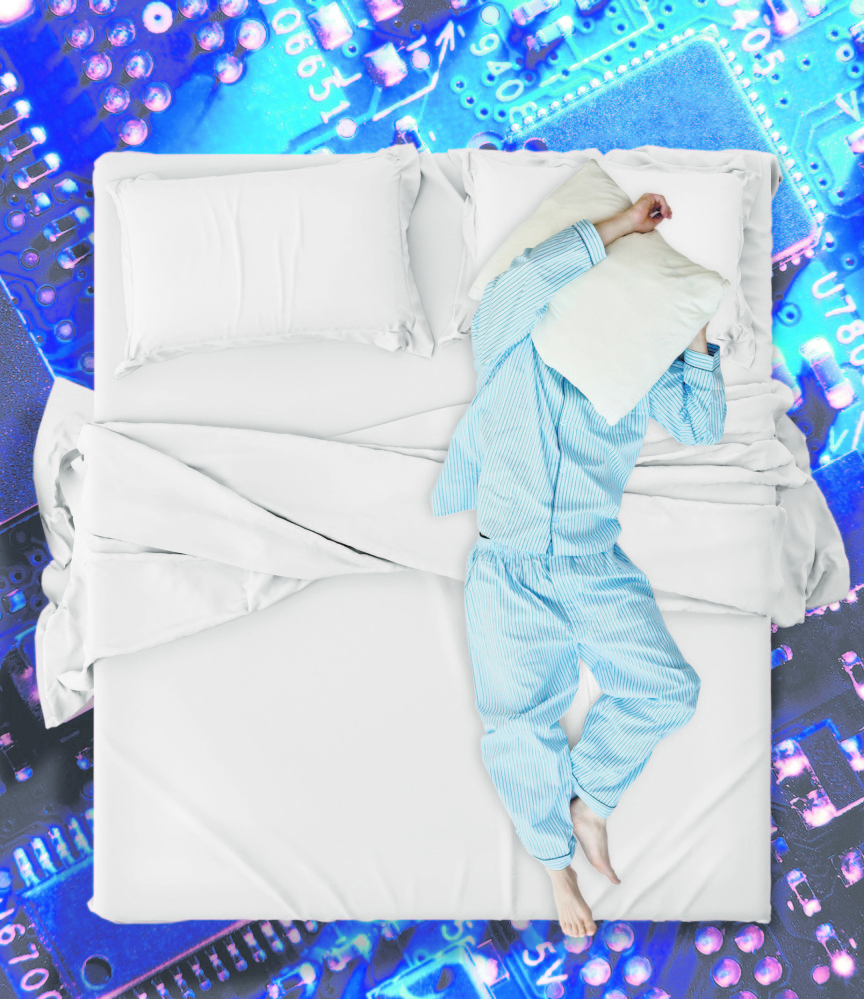In a hyper-busy world, it sometimes seems as though sleep is a luxury. How many times have you heard someone complain that there just aren’t enough hours in the day? But what if the key is not in fine-tuning your day-to-day routine but in minimizing – or at least optimizing – your sleep time?
Here’s a review of some of the more audacious ideas for rethinking the future of sleep:
DREAM MANAGEMENT
A staple plot device of science fiction films (think “Inception”) involves a person waking up and realizing that he or she is living inside a dream. Now that may be a possibility – as long as you don’t mind zapping your brain with a weak electrical current a few times a week. In tests, researchers found that delivering a low-level electrical impulse to the frontal lobe of the brain during REM sleep cycles enabled sleepers to experience “lucid dreaming” – the sensation of being an active participant in your dreams.
In a best-case scenario, “lucid dreaming” would make it possible for people to manage their dreams in real time. People experiencing nightmares – such as those suffering from post-traumatic stress disorder – might be able to alter the outcome of painful experiences. Decades from now, you may even be able to “incept” a set of dreams and trick your brain into thinking that a scenario from someone else’s dream is actually happening to you.
THE PERFECT SLEEP EXPERIENCE
Think what could happen if your mattress were connected to the Internet and your bedroom were hooked up to a WiFi thermostat. You might be able to create the perfect sleep experience, right down to the temperature of the room, the rigidity of your mattress and the amount of light filtering in from your window. You could even have your bed wake you at the end of a sleep cycle.
In 2011, Travelodge hired the futurologist Ian Pearson to study the future of sleep for hotels and travel. By 2030, he said, the perfect sleep experience might be possible. Theoretically, you’d arrive at your hotel, plug in all the variables into a database and drift off into a peaceful night’s sleep.
GENETICALLY MODIFIED SLEEP
As biologists map the human genome, they’re looking for genetic markers that code for certain behaviors and tendencies. One that they hope to locate is the “sleep gene” – a hypothetical gene that codes for “light sleep.” Certain genes, such as CLOCK and BMAL1, are known to play an important role in the body’s circadian rhythm. Now researchers think that they’ve found another gene – DEC2 – that might be the secret to light sleeping. Mutations of DEC2, it appears, significantly reduce the amount of sleep time that’s required for the human body.
The military is apparently one of the major customers interested in such research. Imagine SEALs and Green Berets, once they’ve had some gene therapy, able to soldier on for days at a time during battle. They would be super-soldiers, capable of accomplishing missions without suffering the effects of sleep deprivation such as drowsiness, disorientation and slower reflexes.
Curing narcolepsy
One of the little-told stories of neuroscience is how researchers are getting better at creating drugs that target specific neurotransmitters of the brain. Researchers, for example, have found that steady dosages of modafinil can help cure narcolepsy. The drug appears to target the neurotransmitter GABA, which is the brain’s most important sleep regulator. It also appears to affect other chemicals in the brain, such as glutamate, that are responsible for creating high levels of neural activity.
And some pharmaceutical companies are working with the Pentagon’s Defense Advanced Research Projects Agency on new “wakefulness” drugs.
Smart pajamas
Sleep has many restorative functions related to memory and aging. By monitoring sleep patterns, it might be possible to optimize these functions or even diagnose some medical conditions. The next iteration would be targeting and tweaking these functions using wearable technology.
Imagine settling down in bed wearing pajamas that monitor your sleep patterns. These smart pajamas would measure skin conductivity, blood pressure, heart rate and pulse – and then make a diagnosis, sparing you a trip to the doctor’s office.
Human hibernation
We tend to think of hibernation as something that only animals do to conserve energy and get through long winters without starving. Yet, research that dates back to the early days of the space program is based on inducing astronauts into prolonged hibernation. To make months-long journeys to Mars possible, for example, NASA is experimenting with a method used for therapeutic hypothermia to cool down human body processes in order to make hyper-sleep on manned space missions possible.
Manned trips to Mars will not happen anytime soon, but these hibernation technologies might be used to suspend certain physiological processes, allowing people to survive surgeries, battlefield injuries and gunshot wounds.
Send questions/comments to the editors.



Success. Please wait for the page to reload. If the page does not reload within 5 seconds, please refresh the page.
Enter your email and password to access comments.
Hi, to comment on stories you must . This profile is in addition to your subscription and website login.
Already have a commenting profile? .
Invalid username/password.
Please check your email to confirm and complete your registration.
Only subscribers are eligible to post comments. Please subscribe or login first for digital access. Here’s why.
Use the form below to reset your password. When you've submitted your account email, we will send an email with a reset code.